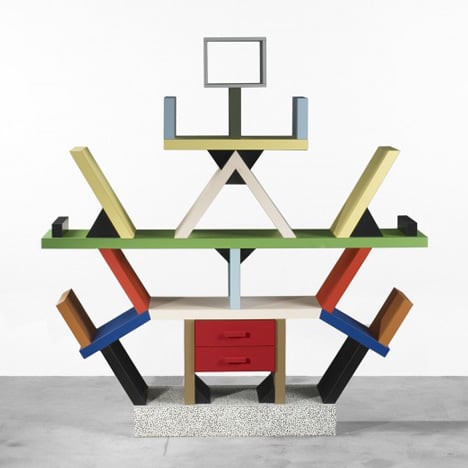A style that was in vogue between the 1970s and the 1990s was Postmodernism. Evolving as a movement against the International Style, this style wanted to rid the world of the rigidity, clarity and simplicity of that style in favour of a more complex and artistic one.
The Postmodernists often referred to the past for inspiration, and incorporated a mixture of styles, bright colours and decoration into their designs. The style brought about a sense of freedom in both art and design, often with witty underlying meanings. It was the time of questioning and contrasting. For example, precious materials were combined with cheap ones; products designed in a minimalist way, but also elaborately ornamented.
According to modernists, less is more. Postmodernists believed that less is a bore. They believed that we needed as much information and references as possible to determine our own individual conclusion. They were in favour of collages and repetition of the same patterns, since they believed that they were more interesting. Postmodernists wanted to challenge the audience and force them to ask questions. In architecture, buildings were rid of their blandness in favour of more artistic and cultural designs, For example, the Las Vegas strip is a pure example of this. In just one stretch of space, one can find different styles and cultures which create a fun and interesting atmosphere.
Postmodernism also had its critics. Some objected that the style was unnecessarily ornamented, and that there was too much of an obsession with recycling the past in order to create something new. Despite this, the Postmodernist movement was effective in getting the world to question why things are the way they are, and this factor s still influential in today's world.
 |
| Juicy Salif lemon juicer by Philippe Starck |
 |
| Kettle designed by Michael Graves |
 |
| Carlton bookcase by Ettore Sottsass |
 |
| Consumer's Rest Lounge Chair by Frank Schreiner |
References
Dhub.org, (2015). Postmodernism: the movement we love to hate | D*Hub. [online] Available at: http://www.dhub.org/postmodernism-the-movement-we-love-to-hate/ [Accessed 26 Jan. 2015].
Kent, S. (2015). Postmodernism: Style and Subversion 1970-1990, V&A | Visual arts reviews, news & interviews | The Arts Desk. [online] Theartsdesk.com. Available at: http://www.theartsdesk.com/visual-arts/postmodernism-style-and-subversion-1970-1990-va [Accessed 26 Jan. 2015].
Vam.ac.uk, (2015). Postmodernism - Victoria and Albert Museum. [online] Available at: http://www.vam.ac.uk/content/articles/p/postmodernism/ [Accessed 26 Jan. 2015].
Vam.ac.uk, (2015). Postmodernism - Victoria and Albert Museum. [online] Available at: http://www.vam.ac.uk/content/articles/p/postmodernism/ [Accessed 26 Jan. 2015].
